If you know me, you know slowing down is not my thing. I operate at 500 mph—planning, moving, always onto the next. Even on vacation, I struggle to just be without mentally mapping out my next meal, my next walk, my next five years. But Hakone forced me to stop. It gave me a 24-hour window of stillness that went against everything I know.
And with slowing down comes its own challenge—learning to embrace it, to not check my email, to accept that maybe, just maybe, a few days in nature could actually be healing. I will never be a camping girl, but I can admit this: there is something about sitting in a hot spring, staring at misty mountains, that just does something to you.
If Tokyo is high-speed chaos and Kyoto is refined nostalgia, then Hakone is the deep exhale you didn’t realize you needed. A little mountain town about two hours from the city, Hakone is famous for onsens (natural hot spring baths), surreal open-air art, and the sneakiest udon joint that makes you want to stay an extra night just to eat more of it.
🇯🇵 If you need more general tips regarding Japan read: The Pocket Encyclopedia to Japan
🍜 If you need travel tips regarding Tokyo read: The Tokyo Pocket Guide
🏮 If you need travel tips regarding Kyoto read: The Kyoto Pocket Guide
And with that , I give you the final section of the Pockets of Japan: Hakone
Getting There
It’s a bit of a journey, but completely worth it. Take the bullet train (~30 minutes from Tokyo Station to Odawara), then hop on a public bus that winds through the mountains, stopping at all the major hotels. If buses aren’t your thing, you can Uber from Odawara, but honestly, the bus was fine—at least in January. Expect more crowds during peak season.
Plan for enough time between connections. We cut it too close and missed a train, so I’d give yourself at least an hour between your train and bus (or next bullet train) to avoid the classic airport-style sprint through the station. And if you do end up with extra time, you’re in luck.
Odawara is one of those small towns you expect to pass through without much thought—until Japan surprises you yet again. Instead of a standard train station with a sad convenience store, there’s a modernized Chelsea Market-esque food hall sitting right inside. So if you do miss your train (been there), at least you’ll be waiting somewhere with elite-level food.
Must-Eat in Odawara
Tonkatsu Odawara. Inside the market-style building next to the station, head upstairs and you’ll find a handful of restaurants—but this is the one. Crispy, juicy pork katsu, fluffy rice, and miso soup that somehow tastes like comfort itself. If you have time before heading to Hakone (or on your way back), it’s absolutely worth it.
Where to Stay
Tenyu Hotel – This hotel is pure wellness. It’s built for unwinding, but not all hotels in Hakone hit the same. Some—including the one attached to Tenyu—are aggressively touristy, catering to big American tour groups in a way that felt more theme park than retreat.
**BEWARE: Do not take the front desk’s dining recommendation unless you’re in the mood for a food court disguised as a restaurant inside a hotel clubhouse.
That being said, Tenyu itself does relaxation well. It’s a mountainside escape where you ditch your shoes at the door, soak your feet in steaming outdoor footbaths, and wake up to mountain views from your private balcony. Even in the dead of winter, watching the mist roll in from the massage chair on our balcony felt surreal—I can only imagine how stunning this place is in the fall or summer.
And let’s be real—after days of getting dressed and ready for every single outing, walking around in a kimono and slippers all day felt so good.
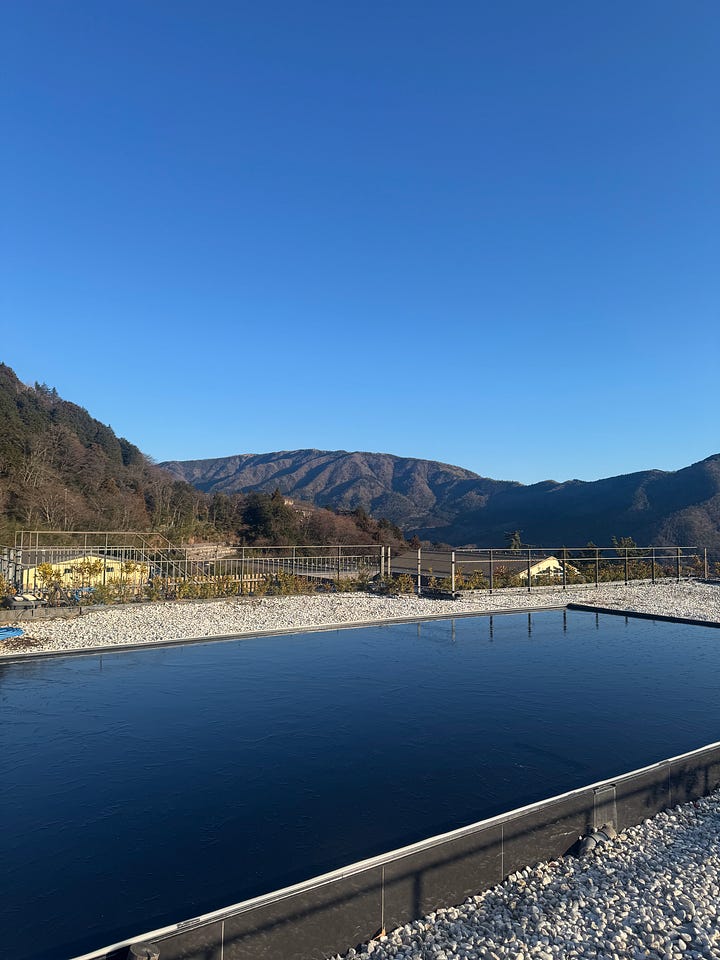
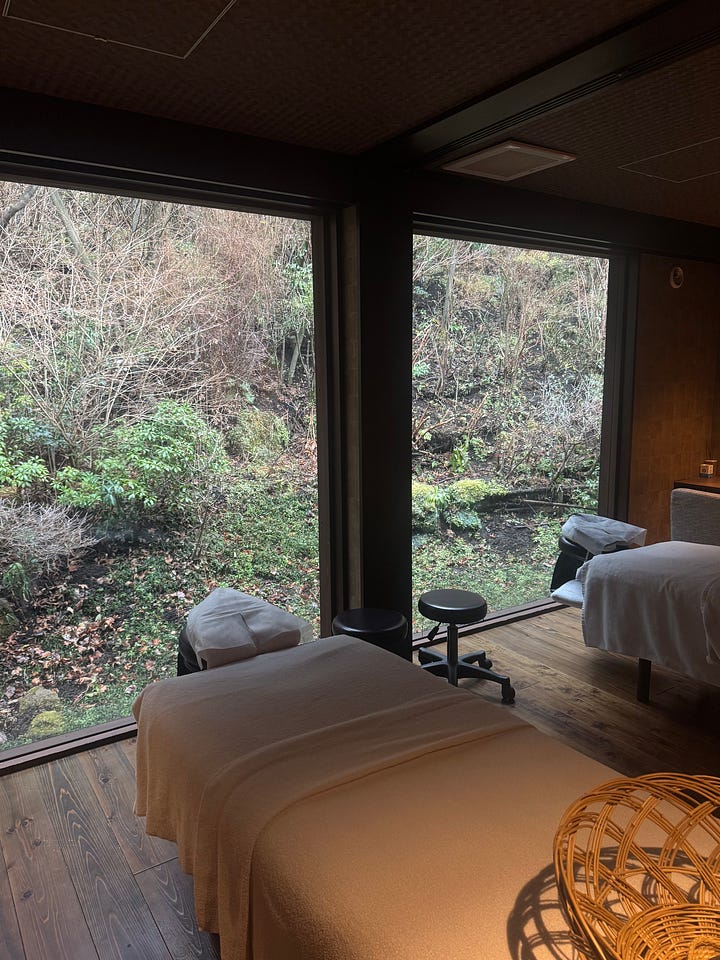
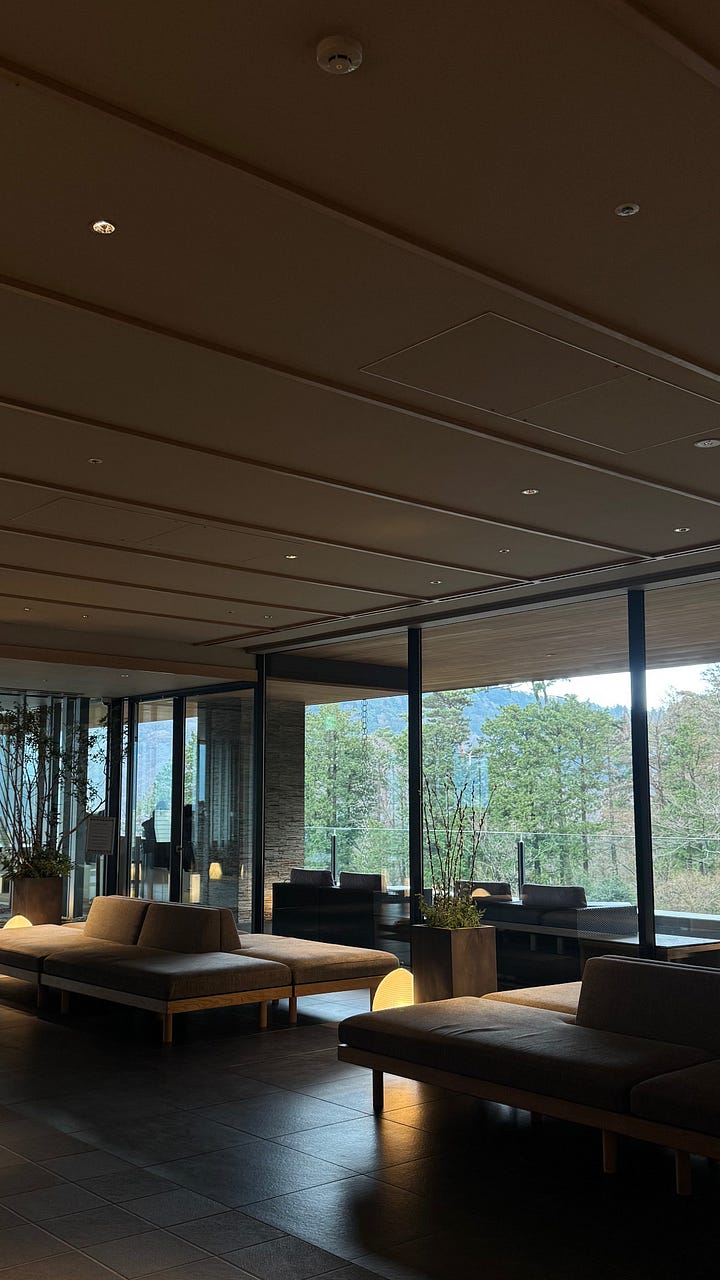
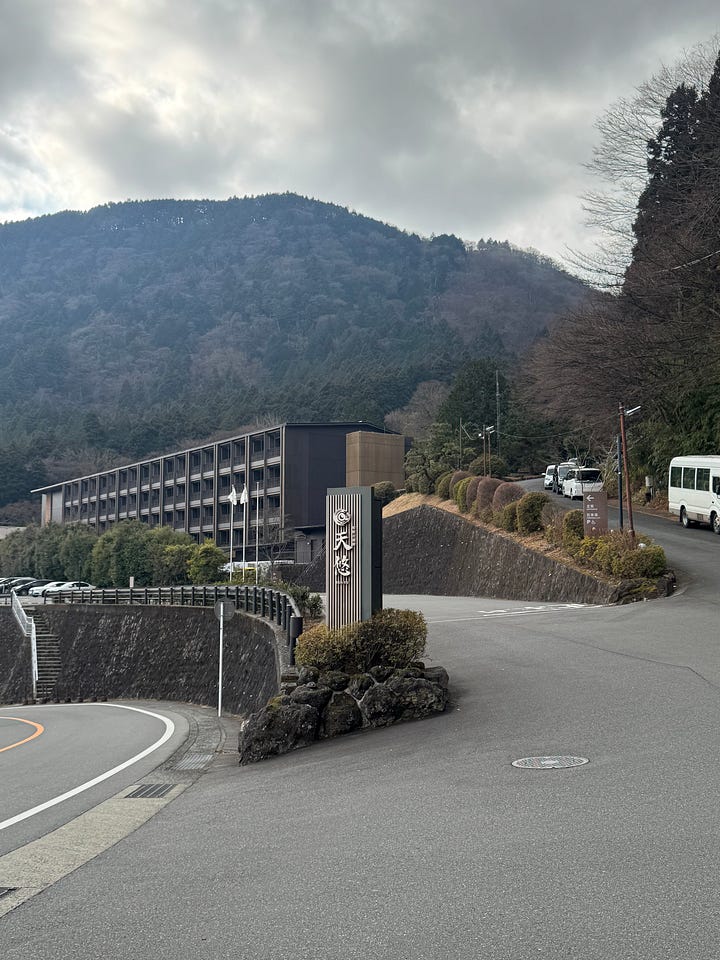
The Onsen Experience
If you’ve never been to an onsen, here’s what you need to know: it’s a geothermally heated hot spring bath, and the moment you step in, your entire body thanks you. It’s not just about unwinding—it’s about soaking in a 1,000-year-old tradition that makes you question why you don’t have a personal hot spring at home.
Tenyu has both indoor and outdoor onsens, plus a sauna. The outdoor onsen is where it’s at—steaming hot water, crisp mountain air, and absolute peace. The indoor onsen is nice too, but honestly, why be inside when you can be outside?
Onsen etiquette: No swimsuits. You shower first—there’s a full setup with stools, soap, and buckets—then step in fully nude. It might feel weird for half a second, but no one cares. It’s just the norm.
🍜 Where to Eat in Hakone
Food definitely isn’t the highlight of Hakone. I’d keep it simple here—maybe some of the other properties have better restaurants than Tenyu did, but don’t expect a mind-blowing culinary experience. Your best meals will come from other cities, but there is one place in Hakone that deserves its own moment.
Kaikatei – Tucked behind the Okada Museum of Art, Kaikatei is the kind of place you stumble upon and immediately feel like you’ve unlocked a secret. A shingled wooden wabi-sabi Japanese house, where patios wrap around a running stream, and the air smells like cedar, steam, and simmering miso.
You will sit on the floor, take off your shoes, and eat handmade udon and sip warm sake while the sound of water hums in the background. At one point, I had to blink five times and ask myself—how the h*ll did I end up somewhere this special just by wandering?
We were the only ones there, making it feel like a private dining experience. But in peak tourist months, I can imagine this place filling up fast. And to whoever gets to experience this spot during cherry blossom season—I am BEYOND envious of you.
If you only eat one meal in Hakone, let it be this one.
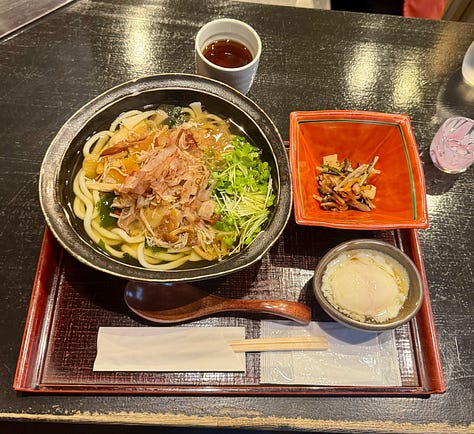
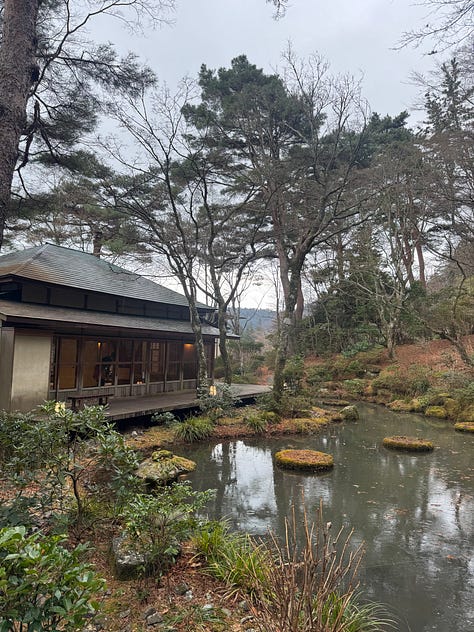
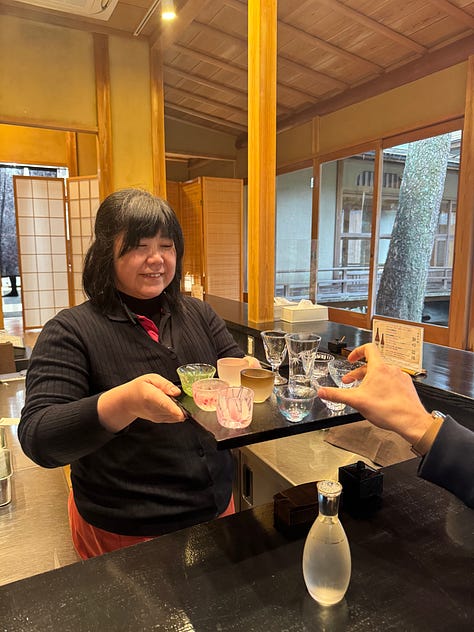
What to Do
Hakone Open-Air Museum - Even if you’re not staying in Hakone, make the trip here. Nowhere else can you see three-story-high statues of eggs or magnetic balls floating over a koi pond. And while I know it’s a crime against humanity to say I’m not a huge Picasso fan, there’s an entire exhibit dedicated to his work, tucked into the side of a mountain. Even if modern art isn’t your thing, the entire museum is a walking experience through the foothills, making it enjoyable for literally anyone—including kids, haters, and reluctant boyfriends.
Mt. Fuji Views - We didn’t get to see Fuji except for a quick view from the bullet train, but Hakone is known for some of the best views of it. If the weather’s on your side, this is one of the most beautiful places to see it.
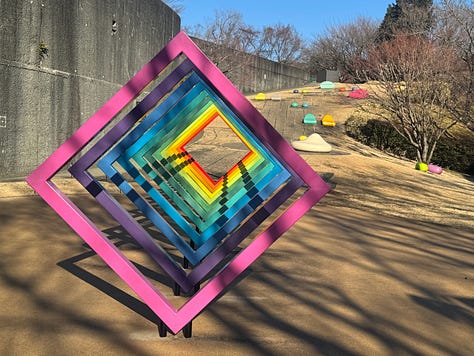
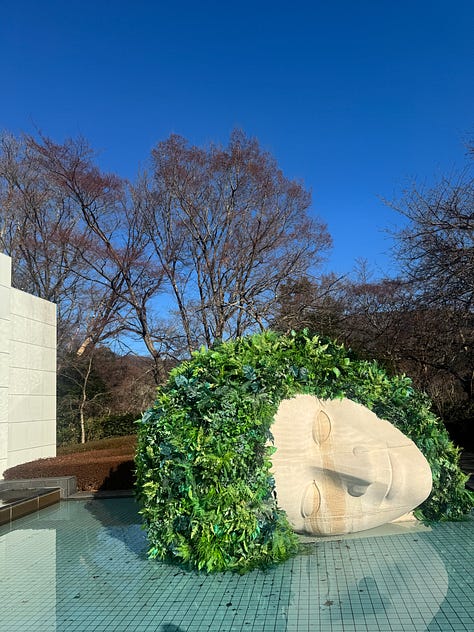
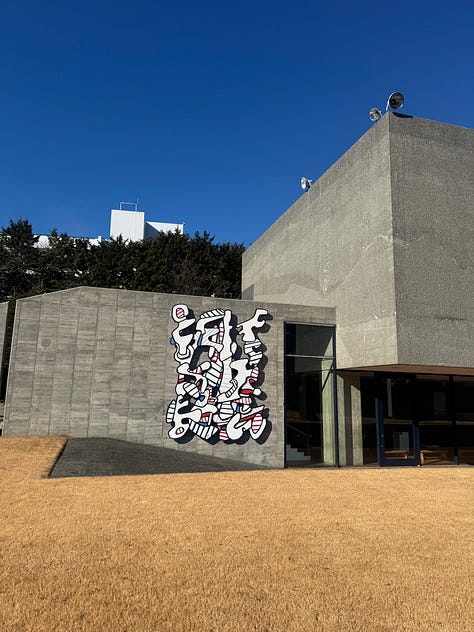

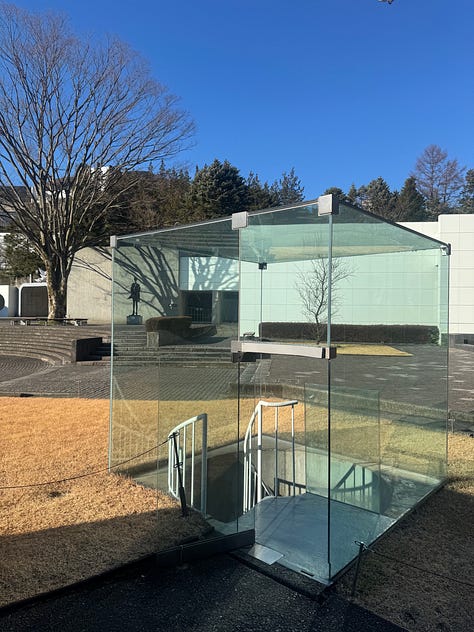
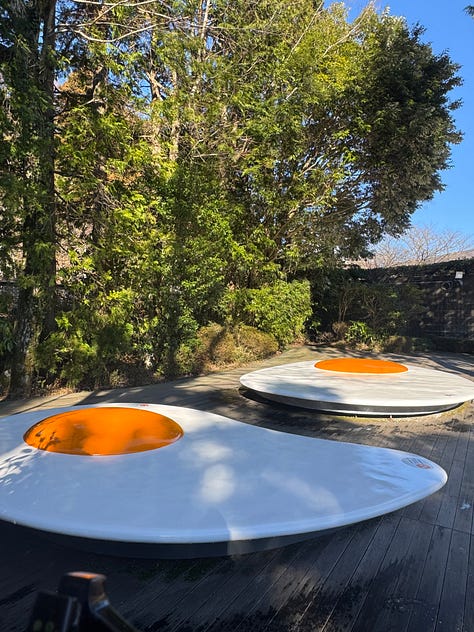
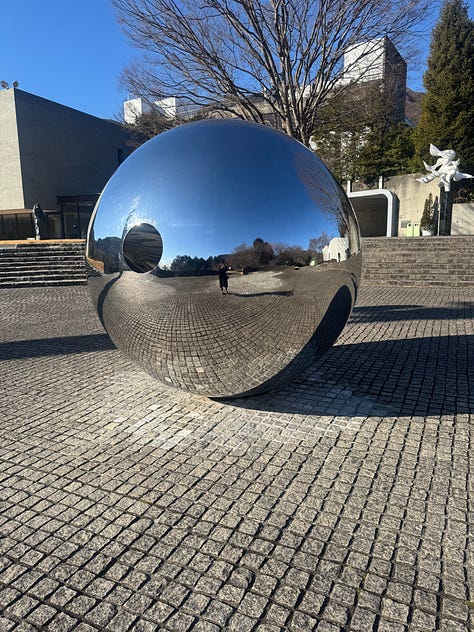
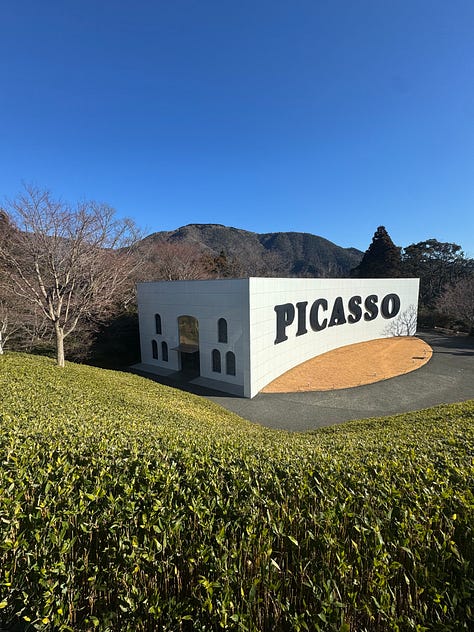
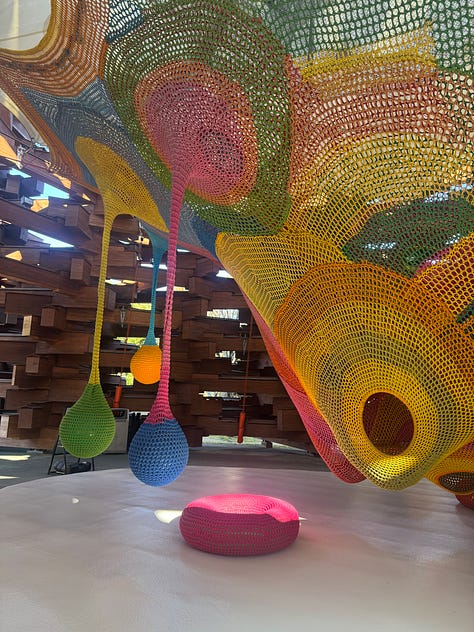
What to Skip
The Spa
Tenyu has a spa, but the prices are insane for what you get. I got a Japanese massage just to experience it, and while I don’t regret it, I wouldn’t do it again.
I firmly believe that hotel spas rarely live up to their price tag. There’s something about them that feels transactional—beautifully designed, but never the best massage you’ll have. I will always choose a small, locally owned spa over a hotel one because that’s where you find the real magic.
The Restaurant Buffet at Tenyu
I grew up going to Club Med, and I hope some of you can relate, but this was an elevated Club Med buffet. Except it somehow cost $70 per person.
Eat at Kaikatei for every meal if you have to—I would have in hindsight. Still grossed out.
Final Thoughts
Hakone was exactly what I needed mid-trip. A full-body reset that I rarely get while traveling. One night is perfect, but if I ever come back, I wouldn’t mind another soak in that onsen.
Closing the Japan Pocket Guide
I hope everyone gets to experience this trip at least once. Japan is a place where hospitality isn’t just a service—it’s a craft. Every moment feels intentional, every detail thoughtfully designed to make you feel welcome.
I know this won’t be my last time here. Hopefully, next time, it’s for a trip to ski Niseko. If you want to plan that with me, I’m all in.
Xx,
Sophie
Follow along here on instagram for mini guides as well: @oopjournal



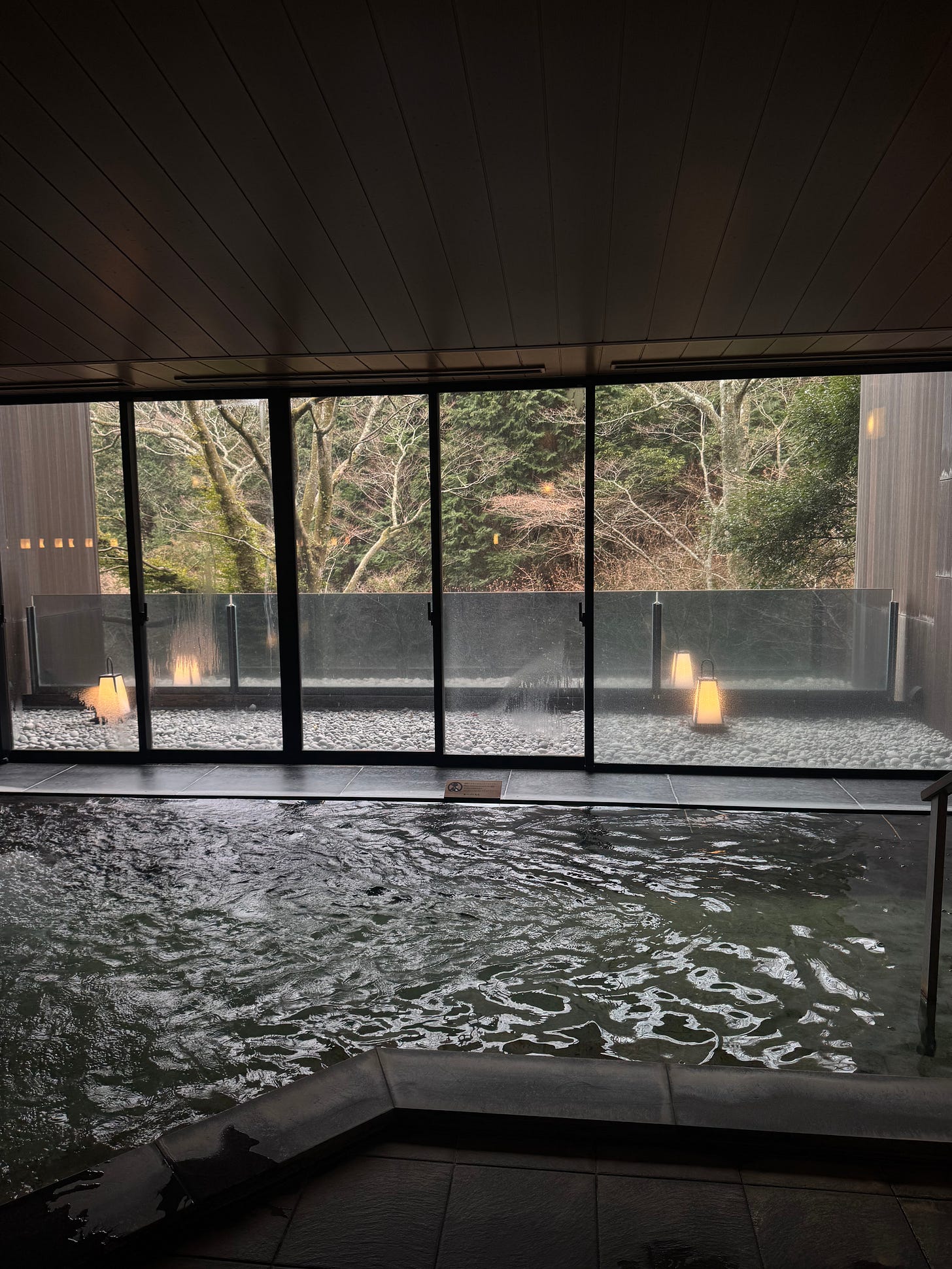
Makes me want to go back!!